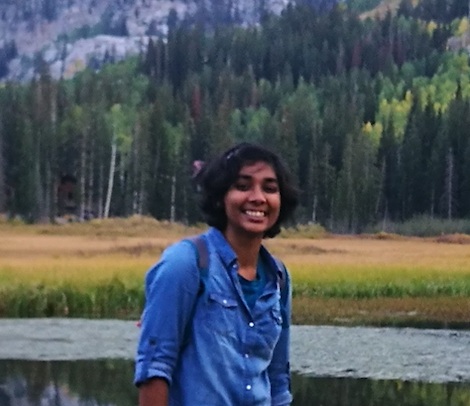I am Renuka Pechetti, Postdoctoral Researcher at Liverpool John Moores University
Current Research Interest
I am currently studying the dynamics of the centers of globular clusters in the Milky Way especially Omega-Centauri due to its proposed intermediate-mass black hole (IMBH). My research involves studying the velocities of stars around the center to confirm the presence of any IMBH. I am also studying the dynamics of stars at the centers of globular clusters in Magellanic clouds.
Research Interests
I also study the centers of galaxies in the nearby universe by measuring their masses to better understand the evolution of galaxies with their central objects. The galactic centers can contain both black holes and nuclear star clusters. I use the stellar kinematics near the centers to determine the amount of mass contained in the black holes and nuclear star clusters.

M51a and M51b - Also known as the whirlpool galaxy, one of my favorite galaxies. M51 with its counterpart around 23 million light years away. A black hole is thought to exist in its center. Also potentially hosts an NSC at its center!
I am interested in the following research questions:
1. How massive are the black holes in lowest-mass galaxies?
Low-mass black holes are hard to detect, if present, because of their diminished effect on their surroundings. My research focuses on detecting these low-mass black holes to understand the evolution of black holes with their host galaxies. The scaling relations between MBH - Mgal presents us with a connection between the black holes and their hosts, which in turn gives us an insight into the formation mechanisms of these galaxies. The origin of black holes can also be understood by studying the low-mass black holes in this scaling relation. I infer the masses of these black holes using the kinematics of the stars surrounding the black hole.
2. How do nuclear star clusters evolve with their host galaxies?
Similar to black holes, nuclear star clusters are present in many galaxies and especially in galaxies with a mass range of 108-1011 M$_\odot$. These are the densest known stellar systems present at the centers of galaxies. Since, not a lot of dynamical mass estimates exist for these nuclear star clustes, I mainly use the stellar kinematics at the centers of galaxies to estimate the masses of these clusters. We estimate these relations to understand the significance of evolution of the nuclear star clusters and their host galaxies.
3. How did the nuclear star clusters form?
Nuclear star clusters are hypothesized to form using two main formation mechanisms 1. In situ formation; where the NSCs form because of the gas falling into the center of a galaxy. Repeated episodes of star formation are evidence of this type of formation 2. Cluster accretion, where star clusters merge and sink into the center due to dynamical friction. The density profiles of nuclear star clusters can provide clues about the formation of NSCs. I work on deriving the nuclear star clusters densities and their implications based on the globular cluster densities. I am interested in studying the star formation histories of these clusters to diestangle their formation scenarios.
4. The connection between nuclear star clusters and tidal disruption events
The presence of nuclear star clusters also gives rise to tidal disruption events. Tidal disruption events (TDEs) are rare events that occur when a star comes close to the roche radius of the black hole and gets ripped apart. The rate of these events are found to correlate with the nuclear star cluster densities and improved estimates of these densities will help in determining the theoretical TDE rates. Future surveys like LSST will increase the detection of these TDEs and, thus, can be useful in comparing with the theoretical models. I am interested in estimating these TDE rates and the galaxies that are capable of hosting TDEs. Many TDEs are also observed to be in excess in post-starburst galaxies and studying these galaxies could help us determine the conditions in which these events occur. I am interested in studying these host galaxies and their environments in multi-wavelengths.
